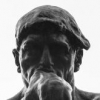Custom Scenery Exchange / Proper Skew / Perspective Angle for Object Editor
-
 10-September 21
10-September 21
-
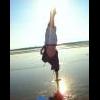
IceKnight366 Offline
Does anyone know the right skew / perspective angle for the Object Editor? I'm trying to take a screen shot of a rug and give it the perspective that it is actually lying flat on the ground. I thought I remember does this way back in the day, but I totally forgot what plugin I used on paint.net and what the measurements were. Anyone know?
-
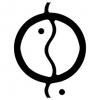
 Liampie
Offline
Liampie
Offline
I think it's something like 21-22 degrees. Trial and error got me there once. Someone else may remember a more specific measurement for you.
-

IceKnight366 Offline
Thanks for your reply Liampie (btw, I'm digging your posts on github. 100% you know the community and I've agreed with everything you've requested on there!). Do you remember 21-22 degrees of what? Because it seems like it's not only skewed, but a certain perspective is added.
-
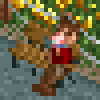
 CHE
Offline
CHE
Offline
The wall pieces are 32 pixels wide and skewed up 16 pixels, so the skew angle is arctan(16/32) = 26.57°.
-

IceKnight366 Offline
The wall pieces are 32 pixels wide and skewed up 16 pixels, so the skew angle is arctan(16/32) = 26.57°.
Thanks CHE. What program are you using for that? I use paint.net but there's no arctan plugin it seems.
-

 CHE
Offline
CHE
Offline
Some 15 year old photo editing software named PhotoImpact, for me the best way to create objects is still pixel counting and adjusting them to the grid in the object maker. The exact angle measurement is only required if you are into 3D modeling I think.
-

 wayniepainie
Offline
wayniepainie
Offline
Some 15 year old photo editing software named PhotoImpact, for me the best way to create objects is still pixel counting and adjusting them to the grid in the object maker. The exact angle measurement is only required if you are into 3D modeling I think.
I use Photoimpact too
-

 Tolsimir
Offline
Tolsimir
Offline
Yeah easiest is doing the skew yourself in a 2 by 1 pixel manner. But from what i understand you want to turn a flat picture into a surface? that would need more than just one skew
-

IceKnight366 Offline
Yeah easiest is doing the skew yourself in a 2 by 1 pixel manner. But from what i understand you want to turn a flat picture into a surface? that would need more than just one skew
Yeah, that's exactly what I'm trying to do
-

 Tolsimir
Offline
Tolsimir
Offline
ok, here a quick 'tutorial' of how I would do it. I'm using photoshop but this should work with any program that has the simplest transformation methods. Imagine I want to have this rug as full tile object.

I go into my program where I already cropped an RCT tile as background so I can easily oversee the dimensions and angles. Then I paste in the above image and resize it so that I can work with it.
 tut1.png (42.93KB)
tut1.png (42.93KB)
downloads: 8Then rotate the image 45° (or -45°)
 tut2.png (48.51KB)
tut2.png (48.51KB)
downloads: 8And now just shrink the image from the top until you reach a 2/1 pixel step ration on the borders, which of course is equal to a 50% height change
 tut3.png (49.13KB)
tut3.png (49.13KB)
downloads: 7And you got an acceptable sprite
 To get the right size you need to experiment with the starting size. My rectangular upright starting sprite (before the rotation) was 41 pixels and I almost fills out the tile. From this point on to get the other rotation angles of the sprite you can do the same steps but with -45° or just mirroring on the final sprite. Hope it helps!
To get the right size you need to experiment with the starting size. My rectangular upright starting sprite (before the rotation) was 41 pixels and I almost fills out the tile. From this point on to get the other rotation angles of the sprite you can do the same steps but with -45° or just mirroring on the final sprite. Hope it helps! -

IceKnight366 Offline
ok, here a quick 'tutorial' of how I would do it. I'm using photoshop but this should work with any program that has the simplest transformation methods. Imagine I want to have this rug as full tile object.

I go into my program where I already cropped an RCT tile as background so I can easily oversee the dimensions and angles. Then I paste in the above image and resize it so that I can work with it.
 tut1.png (42.93KB)
tut1.png (42.93KB)
downloads: 8Then rotate the image 45° (or -45°)
 tut2.png (48.51KB)
tut2.png (48.51KB)
downloads: 8And now just shrink the image from the top until you reach a 2/1 pixel step ration on the borders, which of course is equal to a 50% height change
 tut3.png (49.13KB)
tut3.png (49.13KB)
downloads: 7And you got an acceptable sprite
 To get the right size you need to experiment with the starting size. My rectangular upright starting sprite (before the rotation) was 41 pixels and I almost fills out the tile. From this point on to get the other rotation angles of the sprite you can do the same steps but with -45° or just mirroring on the final sprite. Hope it helps!
To get the right size you need to experiment with the starting size. My rectangular upright starting sprite (before the rotation) was 41 pixels and I almost fills out the tile. From this point on to get the other rotation angles of the sprite you can do the same steps but with -45° or just mirroring on the final sprite. Hope it helps!Thanks for the detail! I've been playing around with it on paint.net, but there are not comparable editing options (at least none that I've seen), to tell you when you're at 45°, nor the ability to shrink the image from the top only. I was hoping not to have to purchase a picture editing program like Photoshop either
 . Have you ever tried this on paint.net?
. Have you ever tried this on paint.net? -
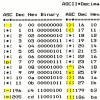
 X7123M3-256
Offline
X7123M3-256
Offline
[/quote]
Do you remember 21-22 degrees of what? Because it seems like it's not only skewed, but a certain perspective is added.
There is no perspective, it's an orthographic projection. Notice how all tiles are the same size no matter how far from the camera - with a perspective projection, distant objects appear smaller. All you have to do to get the correct projection is rotate the image 45 degrees and then scale it vertically by 1/2, exactly as Tolsimir suggested.
The angle that the horizontal lines should make with the image plane is indeed arctan(1/2), which works out to about 26.5 degrees but actually you don't need to know that, the important thing is that the height of the tile is half its width.I've been playing around with it on paint.net, but there are not comparable editing options (at least none that I've seen), to tell you when you're at 45°, nor the ability to shrink the image from the top only.
I would be surprised if any image editor lacks these basic features (I'm pretty sure even Microsoft Paint has a scale and rotate option), but if this is the case then I suggest using GIMP instead, as that definitely does have this functionality.
 Tags
Tags
- No Tags
